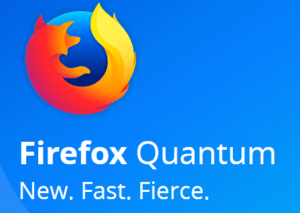Firefox Quantum showcases “Never give up” attitude of Mozilla Engineers.
Chrome has long been the leader in the web browser segment. But Mozilla engineers never gave up, and in fact for months have been working on Firefox Quantum, the version with which they optimistically believe will bring back the glory.
This new browser currently in beta version is finally available for download for everyone. The changes are visible on the outside and on the inside.
Here are the impressions about Firefox:
Firefox is faster as it works in parallel:
The new navigation tabs open twice as fast as it did a year ago, when Firefox 52 appeared. One of the main reasons for this speed improvement is Servo. It is a new rendering engine developed in Rust programming language having a fundamental difference with its predecessor: It takes advantage of all the processing cores of your processor.
In previous versions of Firefox, the rendering engine focused all its activity on a single core, but Servo changes the focus and if you have more than one core in your processor (something common in desktop or laptop computers as in CPUs for mobile devices), Servo will work in parallel in those cores, distributing the load, so that all those cores contribute to the performance.
High Performance & Memory Management
Another fundamental internal change in the new internal design of Firefox is its management of navigation. Until now the management of the different tabs of navigation that you were opening were treated as a single process, something that Chrome understood.
Google’s managers were pioneers in converting each tab (and extension) into a process, allowing them to separate, isolate and manage them independently.
In Firefox they had been pursuing this same goal for a long time. But adapting to this type of operation would make it necessary to “stop supporting extensions and add-ons that depended precisely on the unique process architecture.”
Mozilla was reluctant to make the change because the extensions were precisely one of the navigator’s strengths, and so the work was divided into two distinct areas. The first, the Electrolysis project, which is responsible for making Firefox support multi-threading. The second, a difficult transition from the traditional architecture of extensions to the so-called WebExtensions.
It has now expanded the number of processes that Firefox uses to process and protect the content of each web page, as well as improving the management of those processes to improve memory usage, performance and stability.
Not only that – each of these processes can work on several cores of the processor at the same time (the parallelism), which improves performance and protects those tabs from navigation against possible “crashes” from other tabs.
New Design
To these numerous and important internal changes are added the external changes. The user interface of Firefox Quantum changes radically.
To begin with, the eyelashes no longer have those elegant curved corners to become pure and hard rectangles. Cruder and less showy, Mozilla’s obsession seems to have been focused on saving vertical space.
There is no “air” above those tabs, although user can add it by activating the title bar (which is not of much use, although) or adding some additional space by activating the “Drag space” box in the “Customize” option Firefox menu.
Unification of Address & Search Bar
Another radical change will receive a warm welcome from traditional Chrome users. Firefox has unified – address bar and the search bar, copying the behavior of the glorious Omnibar Chrome.
Users can also separate both options using the customize menu. But being able to perform both searches and enter new URLs from the same site was really a needed interface change.
Drop-Down Menu
The iconography and its position (the reload button is placed next to the go back or forward in navigation.
The new drop-down menu on the right side shows a series of large icons to move to a list of options that goes “to the point” and is more in line with what other browsers and applications usually do. It is less visual, but it probably helps the speed with which the options are accessed.
Extensions
In August 2015 Mozilla explained what its action plan was for add-ons or extensions. The WebExtensions made use of a new API compatible with a lot of Chrome and Opera, which would make it easier to develop these add-ons for several browsers at a time.
Firefox Quantum (Firefox 57) gives the exclusive jump to WebExtensions.
What does that mean?
As developers of extensions have the responsibility of modifying their add-ons to become WebExtensions. The change, even having been announced no less than two years ago, is so important that there are still a number of add-ons or extensions that remain unavailable except in legacy version.
That means you will not be able to use them in Firefox Quantum. And this obviously can be very annoying.
In fact, some of these “legacy” extensions may never make the leap to WebExtensions, which would definitely be disappointing. Given that the vast majority of extensions are developed and managed by independent developers who have programmed them in the past but no longer take care of them. The truth is that this situation is logical and should be affordable. That nevertheless does not remove for you to feel that effectively that change to Firefox Quantum has drawbacks that can be more or less serious.
Privacy:
Quantum offers private browsing feature capable to block annoying ads.
So Firefox Quantum is faster and more efficient and should definitely convince technology world with its superior browsing capabilities. And at the same time, it will bring anxiety to Google Chrome.
Firefox Quantum would be launched officially on November 14, 2017. You can also sign-up to receive launch updates or try beta version.






